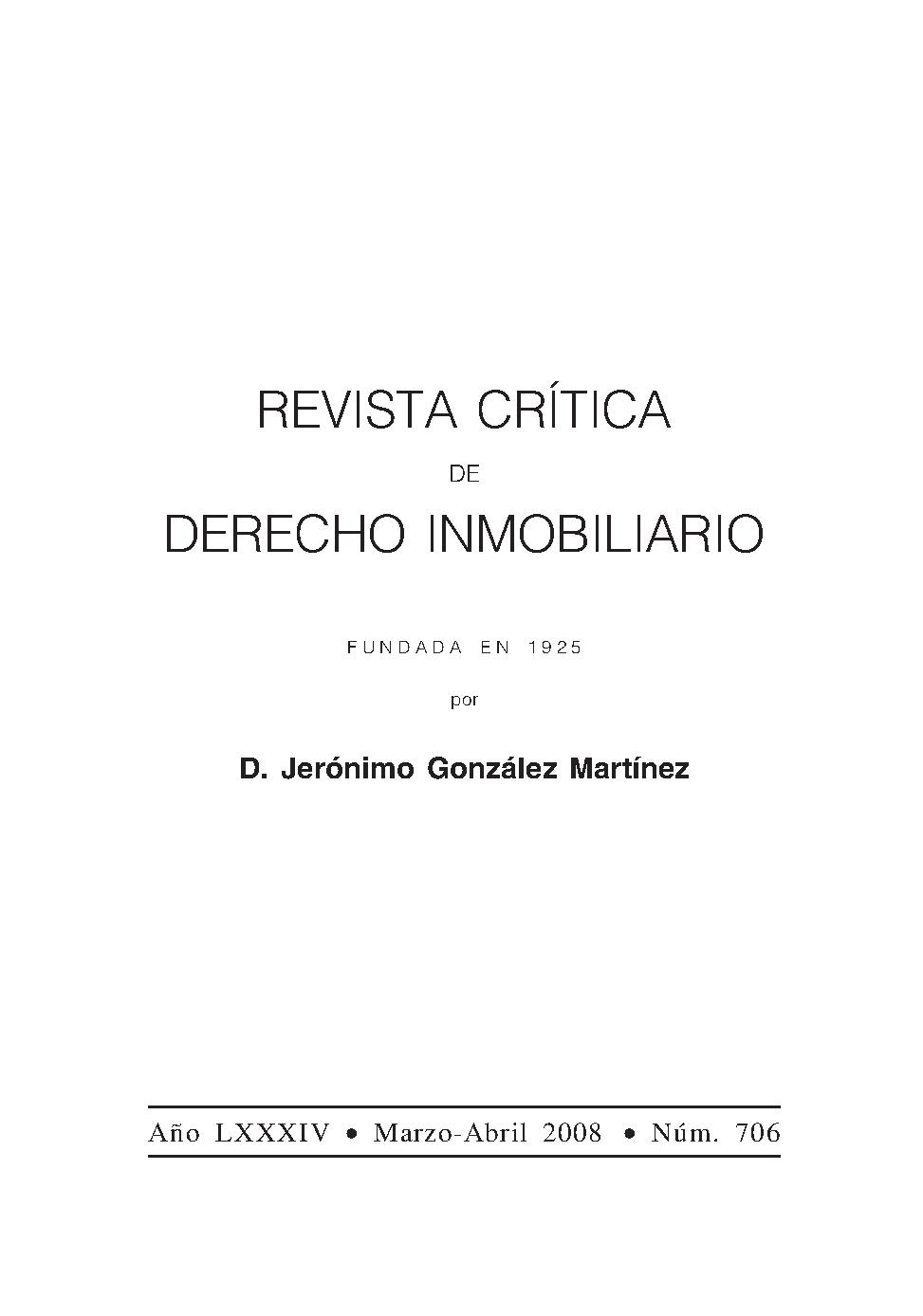LA IGUALDAD DE RANGO HIPOTECARIO.
Keywords:
MORTGAGEAbstract
This study takes a comprehensive standpoint to analyse the identifying characteristics of equality of mortgage rank, a concept whose usefulness in business justifies some minimum discussion of its underpinnings. To some extent foreign to the classic guidelines that shape priority of registration (which are anchored to the hierarchical organisation of titles according to order in time), equality of rank may arise because the persons involved so wish, or also by the action of certain legislative references (although said references do not expressly identify this result); such would be the case of cautions concerning lenders for whose payment some property has been awarded pursuant to article 45 of the Mortgage Act. In its basic classification, equality of rank can be looked at objectively or subjectively: objectively when the holders who share rank hold independent rights (for example, two mortgages); subjective where what is at issue is a single right with several holders and the right is liable to enforcement. For this second hypothesis one could not truly speak of equality of rank, as there would only be a single right; however, article 227 of the Mortgage Regulation, in stating the «preference of charges and encumbrances that are simultaneous or of the same rank as the plaintiff's credit», would extend its solution to this case. Whether objective or subjective, equality of rank could in turn be from origin or supervening in nature. The distinction proves to be of great importance, because the fact that it is of one type or the other will entail a greater or lesser organisation, a greater or lesser degree of foreseeability for the persons concerned. Succession mortis causa by several persons to a right registered initially in favour of a single holder would illustrate this.









